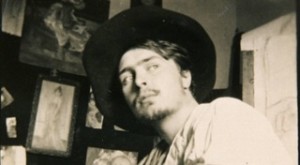 In the late nineteenth and early twentieth centuries, avant-garde European artists sought inspiration in esoteric societies and Eastern spiritual practices. One such artist was a young painter-turned-dancer named Rudolf Laban.
In the late nineteenth and early twentieth centuries, avant-garde European artists sought inspiration in esoteric societies and Eastern spiritual practices. One such artist was a young painter-turned-dancer named Rudolf Laban.
While involvement with “secret societies” represented a rejection of religious and cultural values of the West for artists, occultism was also attractive because it appeared to offer a single key that would solve the mysteries of the universe.
Avant-garde artists and occultists were united by their denial of a world increasingly out-of-control due to the explosion of ideas in the social, political, and natural sciences. They shared a deep yearning to comprehend universality.
In other words, both groups were searching for a T.O.E.
Find out more in the next blog.
